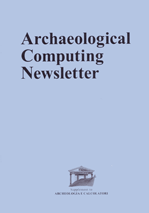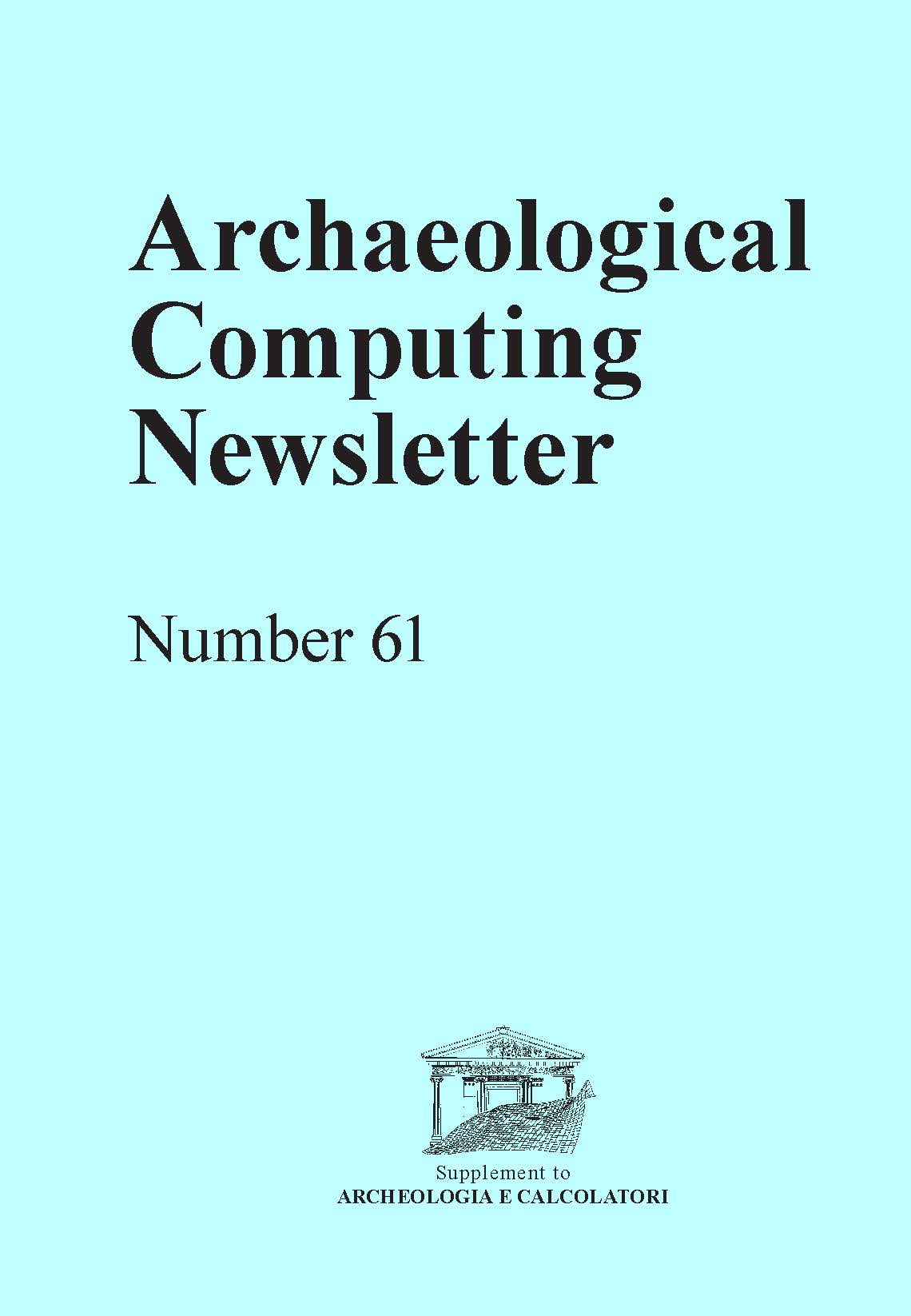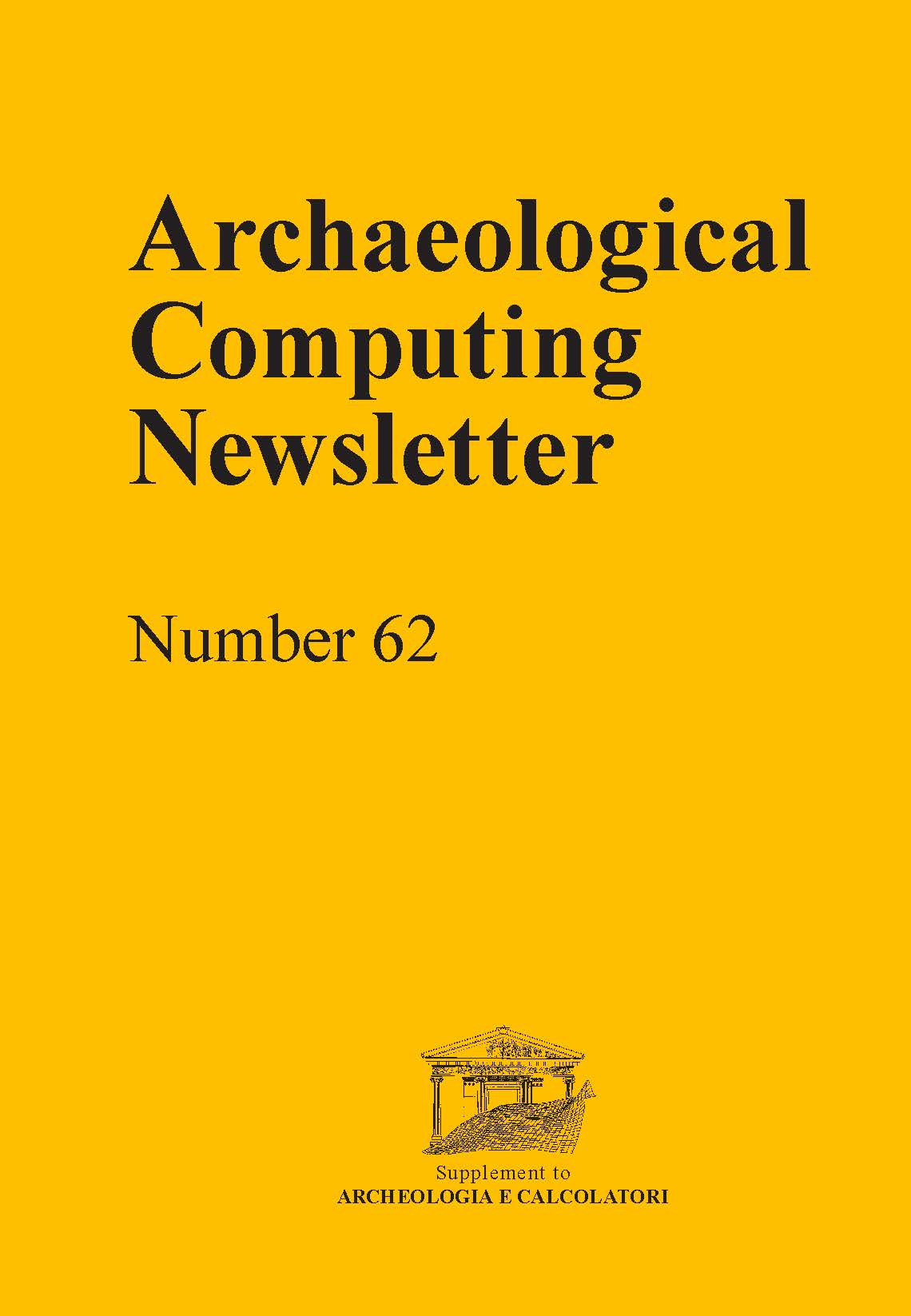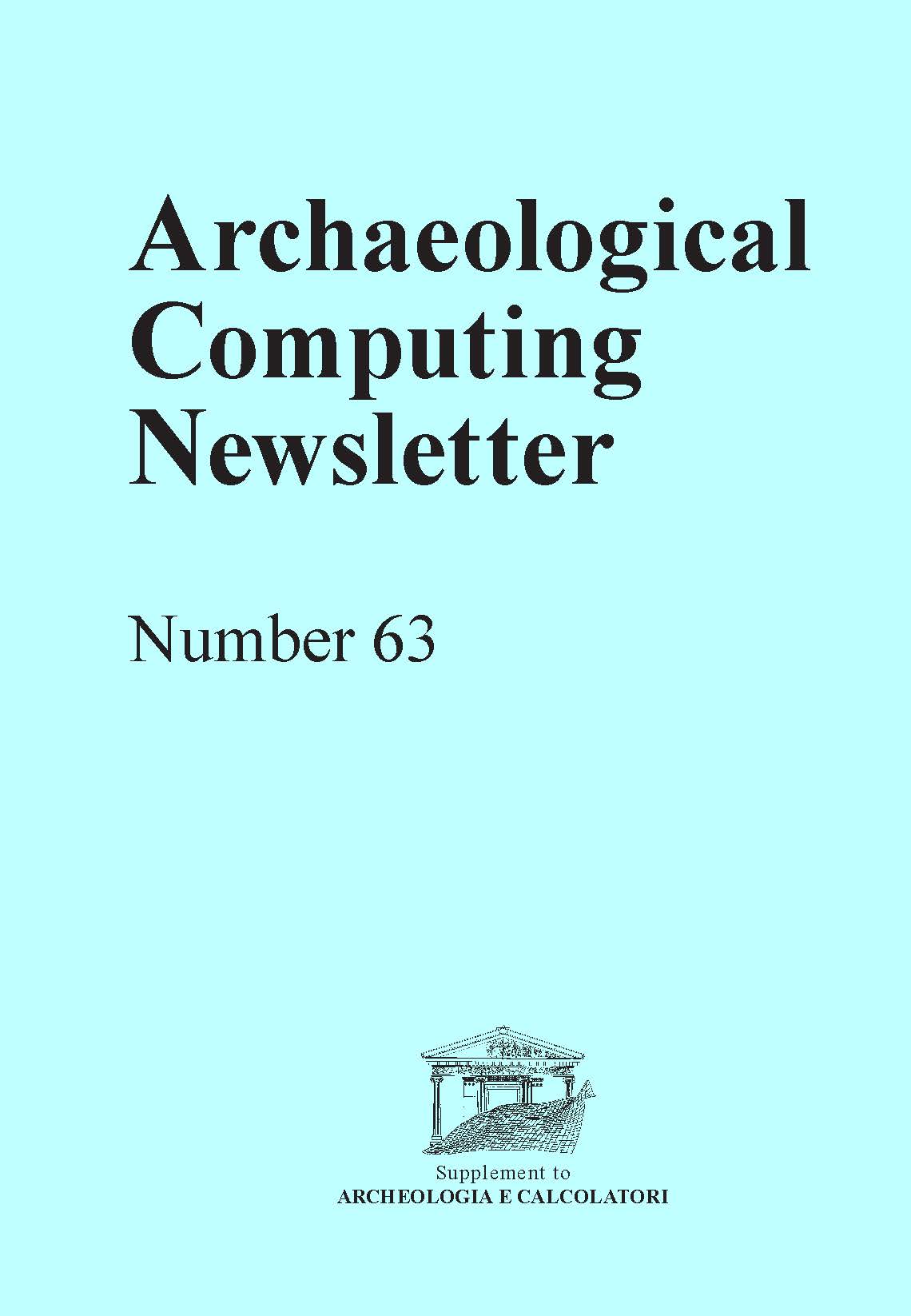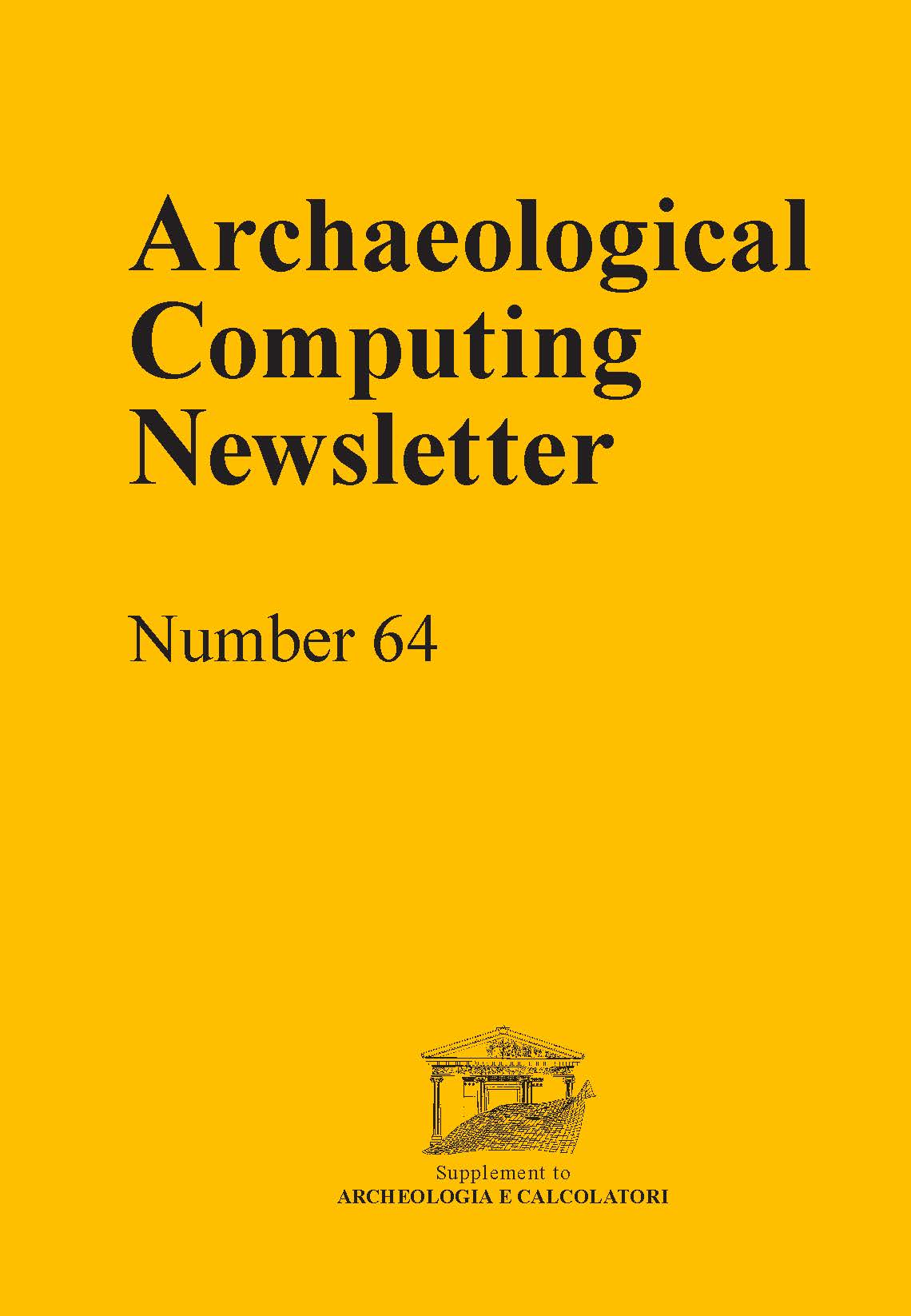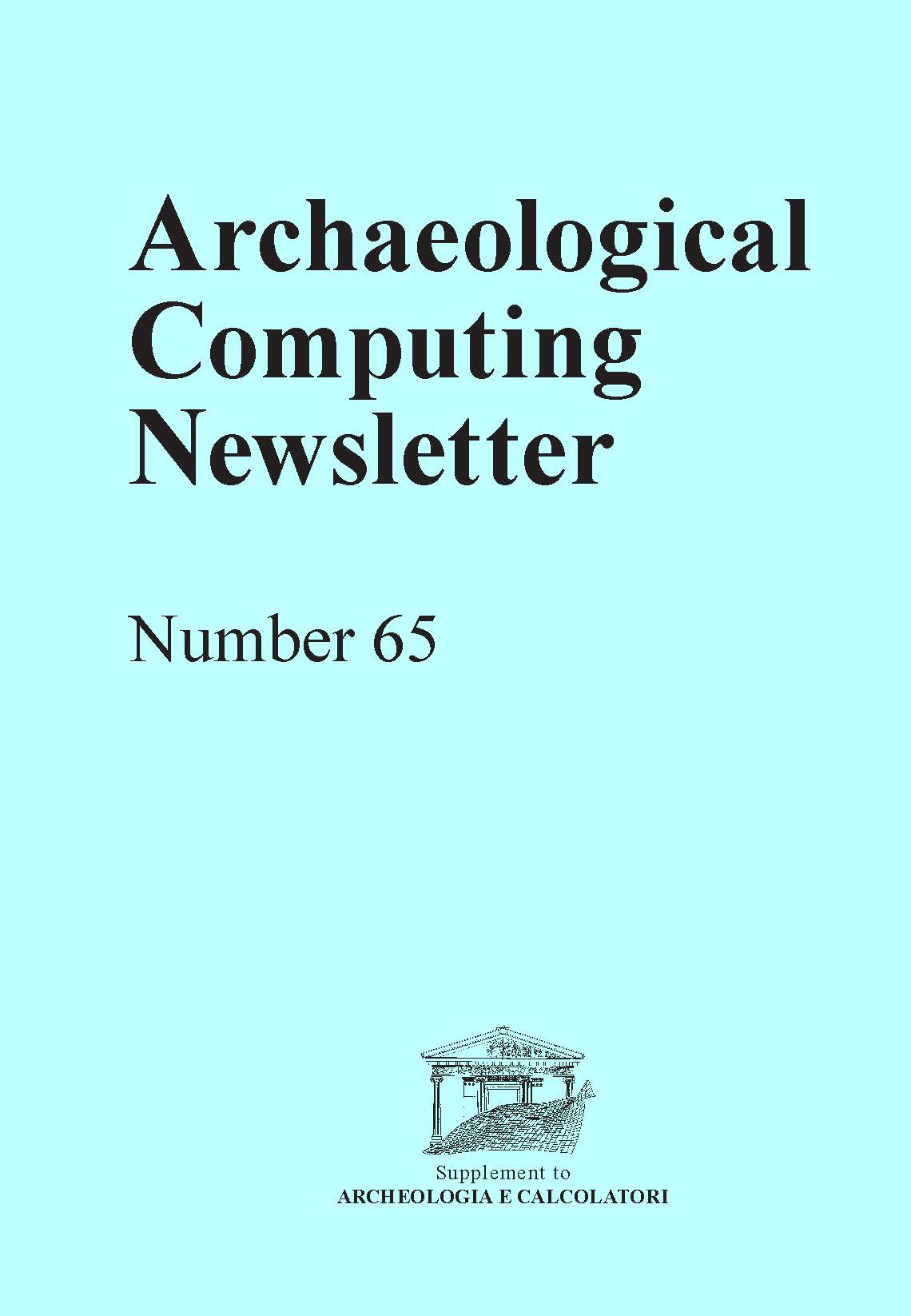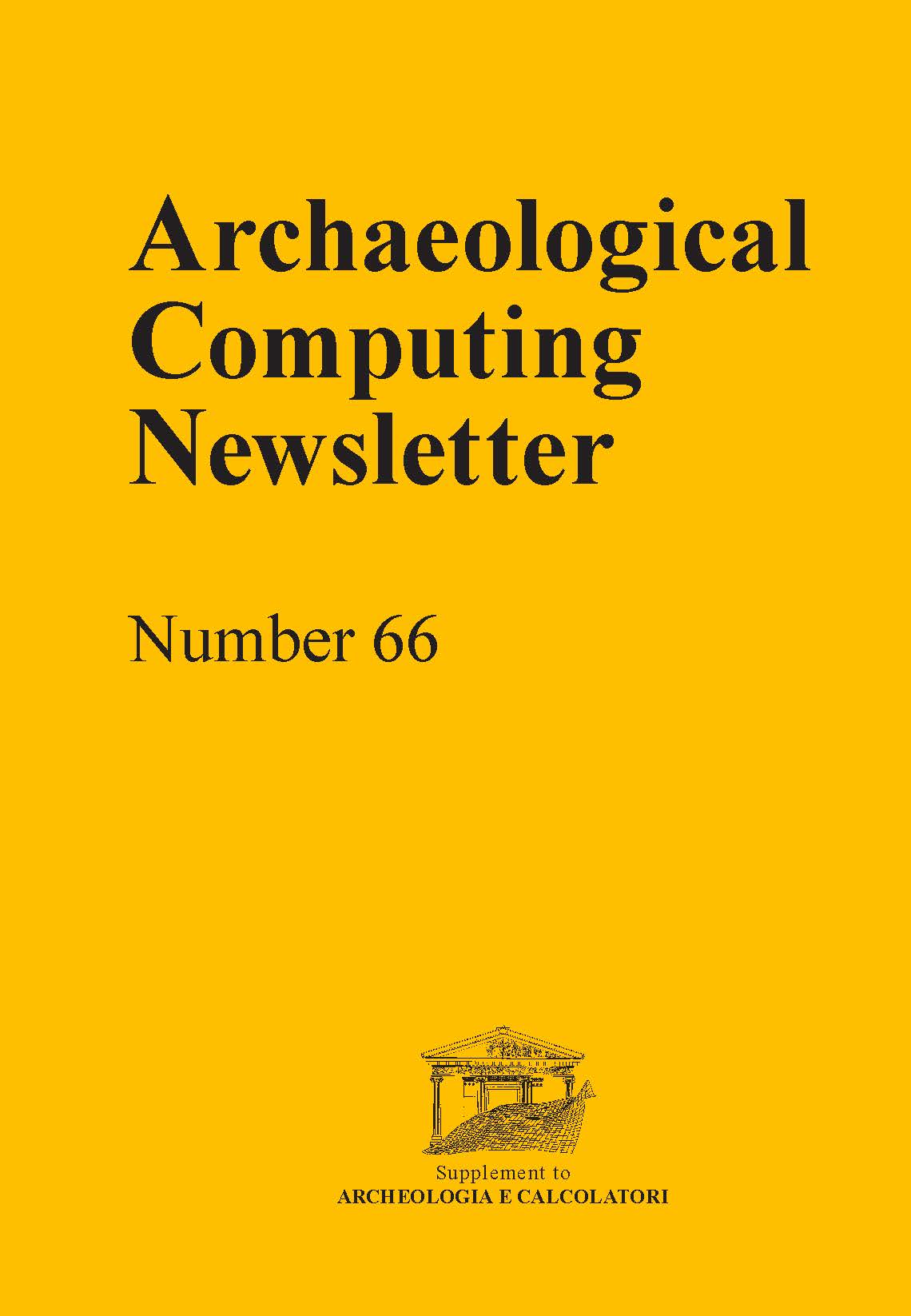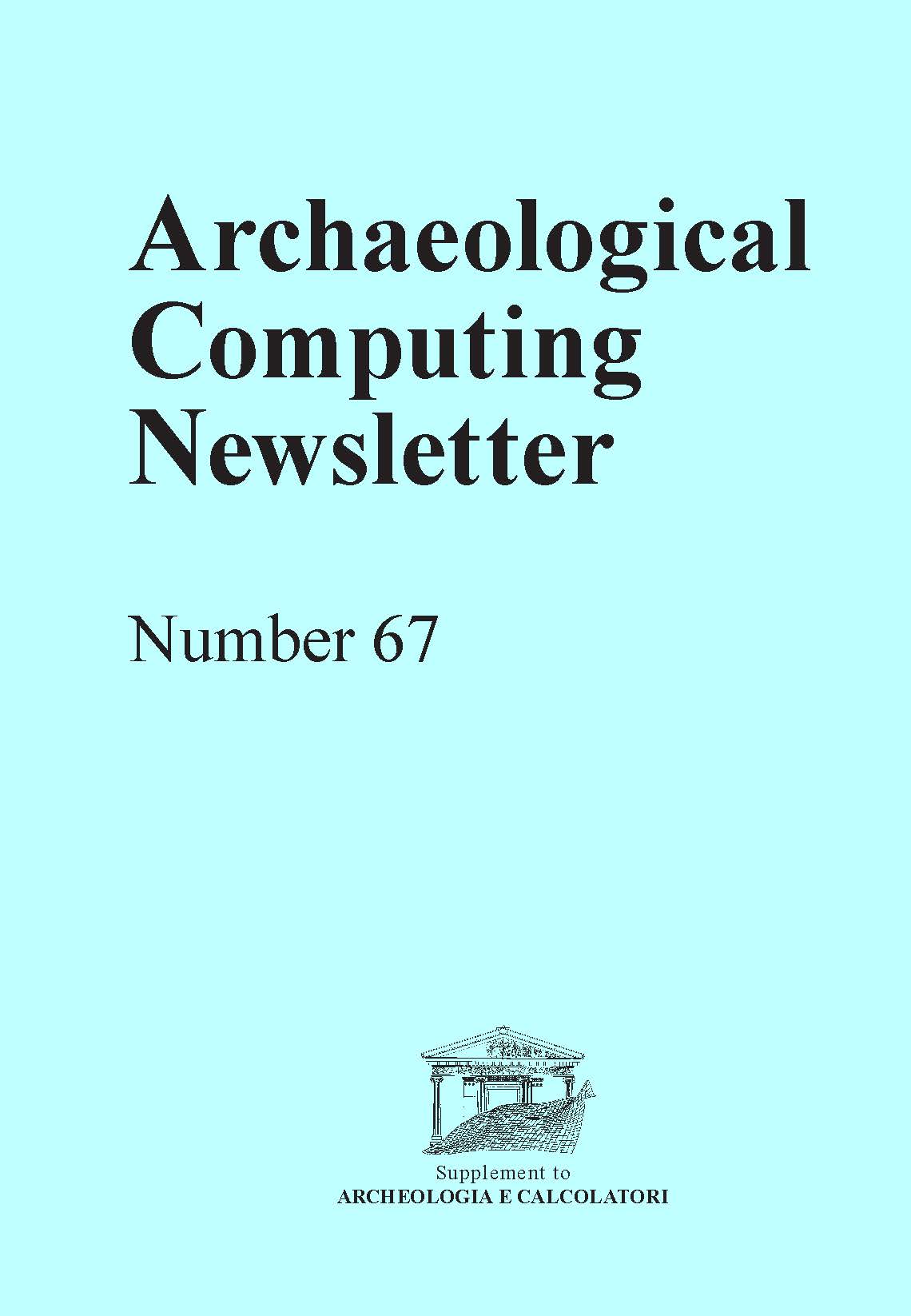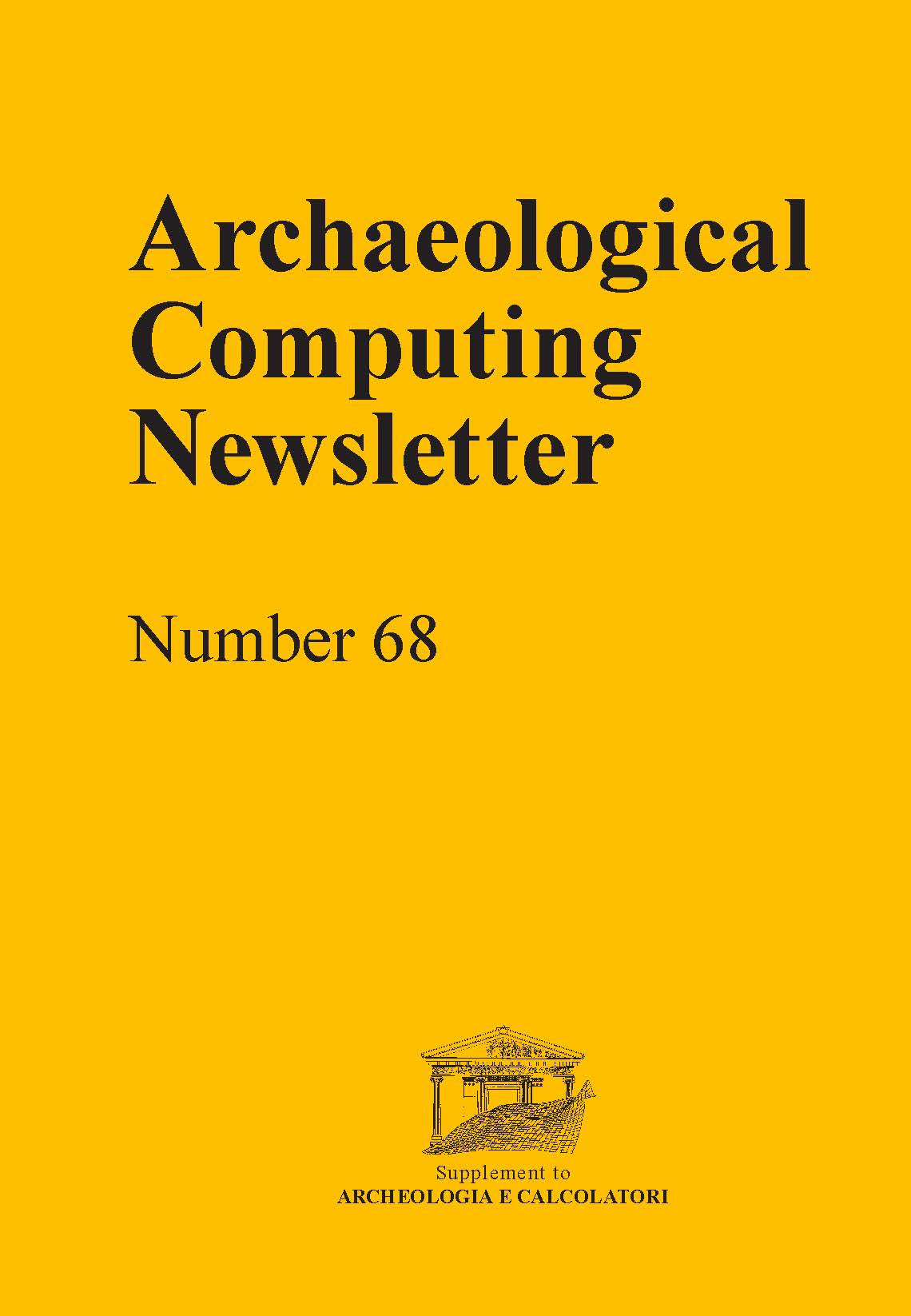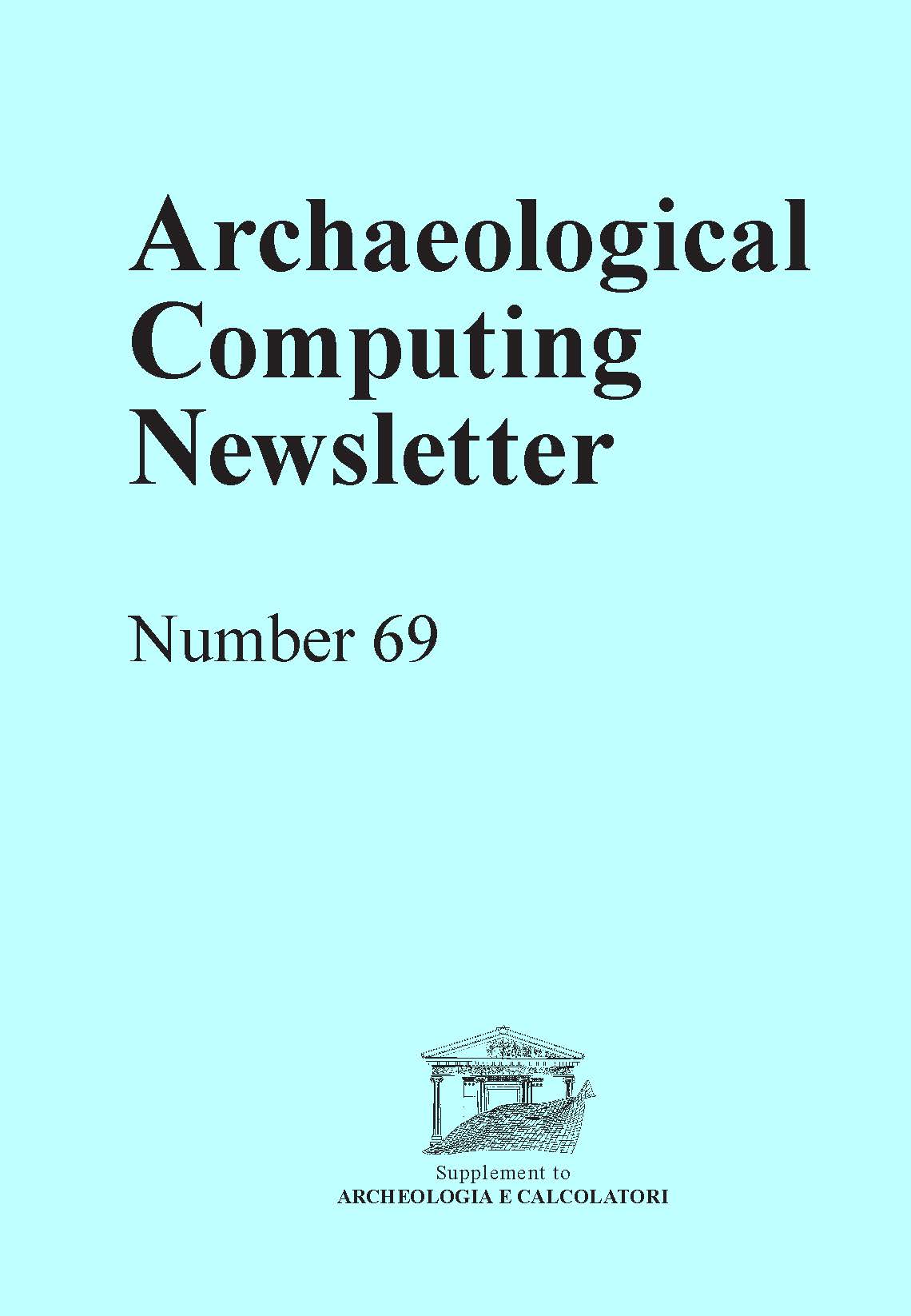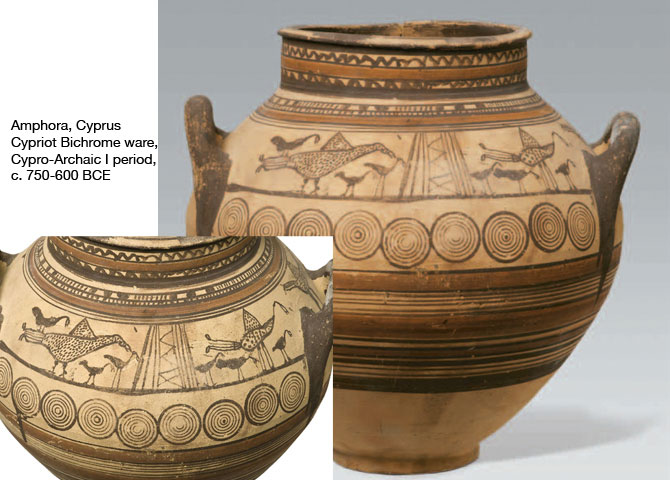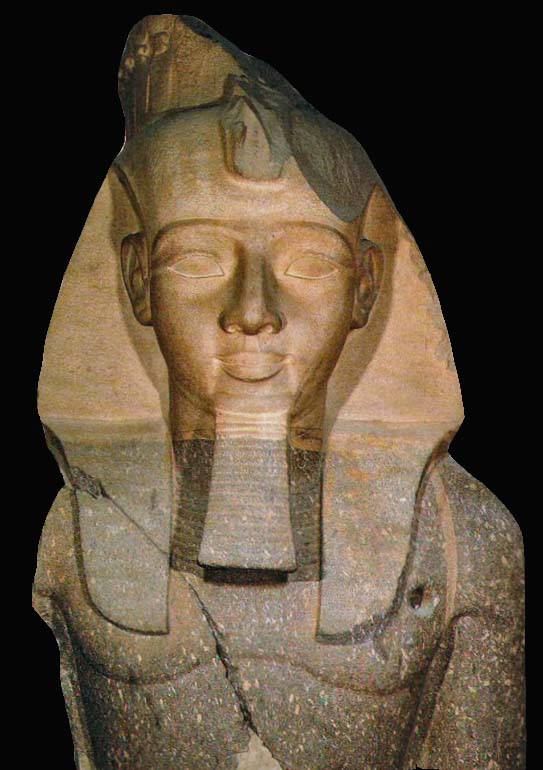The Proceedings of the 9th Workshop "ARCHEOFOSS Free, Libre and Open Source Software e Open Format nei processi di ricerca archeologica" are published in the 8th Supplement to «Archeologia e Calcolatori». The Workshop was held at the Polo Universitario Zanotto of the University of Verona in June 2014. The Department of Cultures and Civilizations and the Department of Computer Science, in cooperation with the ArcheoFOSS Scientific Committee, promoted the organisation of the Workshop. More than thirty selected articles, subdivided in three sections (Standards and cataloguing rules, GIS applications and case-studies, Data sharing and dissemination) reflect the various issues that have characterised this edition.
In the course of two intense days of presentations and tutorials, special emphasis was laid on the use free and open source software in archaeology and on issues related to open data, data sharing, accessibility and preservation strategies, which are currently at the centre of national and international debates. The Workshop ended with a moment of reflection, resulting in the general opinion that times are rapidly changing and archaeologists are witnessing a revolution that will certainly have a profound and significant long-term impact in the years to come.
The Proceedings of the 3rd SITAR Symposium ("Il SITAR nella Rete della ricerca italiana. Verso la conoscenza archeologica condivisa") are published in the 7th Supplement to the journal "Archeologia e Calcolatori". The Symposium was held at the Museo Nazionale Romano - Palazzo Massimo alle Terme in Rome in May 2013. Two years after the previous edition, the Soprintendenza Speciale per i Beni Archeologica di Roma (SSBAR) was able to show the progress of the SITAR Project (Archaeological Information System of Rome) and the information services developed as part of its architecture.
More than 30 papers, subdivided in seven main sections (1. Digital Cultural Heritage; 2. Dissemination of the SITAR model; 3. ICT and the GARR-X Network; 4. Open Data; 5. Research and smart innovation; 6. SBARR databases and SITAR; 7. SITAR in detail: case studies) indicate that the way forward for the development of new approaches in Cultural Heritage protection, management and promotion consists precisely in sharing archaeological knowledge and encouraging international relationships with various stakeholders: public bodies, researchers and professionals. Particular emphasis is also placed on the need to put full accessibility of public information at the service of protection, promotion and enjoyment of cultural heritage, in close cooperation with academic and research institutions.
ARCHEOSEMA is a meta-disciplinary project of theoretical, analytical and experimental archaeology. The project title sums up its two main theoretical foundations: the openness of modern archaeology (ARCHEO) to the analysis of physical, historical, linguistic signs (SEMA) underlying natural and cultural systems reconstructed and simulated through Artificial Sciences. The project is connected to the construction of models conceived as both epistemological and methodological tools and founded on the dialogue between theoretical and experimental Archaeology with Physics, Geography, Linguistics and Statistics. A computer-programmed architecture integrates relational capabilities of Database Management Systems, Geographic Information Systems and Artificial Adaptive Systems. Analysis, applications and experiments are currently being conducted by a team of young archaeologists, geographers and linguists at the LAA < AAS: Laboratory of Analytical Archaeology and Artificial Adaptive Systems (La Sapienza University of Rome).
This Supplement to "Archeologia e Calcolatori" is a special issue dedicated to the memory of the English archaeologist David Leonard Clarke (1937-1976), and is a further attempt to collect some applicative studies of complex natural and cultural phenomena following the Artificial Intelligence computational models, through the lens of Analytical Archaeology and on the basis of the progress made by Cognitive Science, Neuroscience and Cybernetics.
The 3èmes Journées d'Informatique et Archéologie de Paris (JIAP 2012) were held on 1-2 June 2012 at the Institut d'Art et d'Archéologie (Centre Michelet) in Paris, in the Grand Amphithéâtre. As in previous editions, many papers were presented on the most current research projects and the shortlisted special theme was the use of 3D models for the acquisition, processing and dissemination of archaeological data. With over 100 participants, the JIAP emerge as a highly anticipated event, appreciated by the French and the international community, among both archaeologists and computer scientists.
21 selected articles reflect the various debates that have animated this edition. Some meaningful keywords can be extracted: cultural itineraries, socio-cultural processes, 3D modelling, GIS, geo-collaborative platforms, ontologies, etc. All these features and the underlying technology today characterise the daily activities of most archaeologists.
The Proceedings of the 7th Workshop ARCHEOFOSS Free, Libre and Open Source Software e Open Format nei processi di ricerca archeologica are hosted in the 4th Supplement to Archeologia e Calcolatori. The Workshop was held at the Museo Nazionale Romano - Palazzo Massimo alle Terme in Rome in June 2012. A prestigious venue, chosen by the Special Superintendency for Archaeology in Rome and by ArcheoFOSS Scientific and Promoting Committees, to mark the renewed attention paid by the territorial Institutes of the Italian Ministry for Cultural Heritage to the current theme of Free and Open Source Software and its technological implementation.
The primary outcome of the 7th Workshop was to facilitate a multi-faceted approach and a more advanced sharing of FOSS-based applications, and to promote new collaborative action plans for the development of knowledge management and representation systems in public archaeology. The key subjects under investigation were: Open Source, Open Data, Open Archaeology, Open Science, knowledge sharing, Archaeological Heritage legislation, standards and rules, training and education, GIS and RDBMS, and Virtual Reality. Representatives from many Institutes of the Ministry of Cultural Heritage, government agencies, the National Research Council, Universities, Foundations, together with scholars, experts and professionals presented their projects, experiences and reflections, with a special focus on the relationships between archaeology, knowledge society, ICT and computer science.
The Proceedings of the 2nd issue of the JIAP (Journées Informatique et Archéologie de Paris) are published in the third Supplement of «Archeologia e Calcolatori». The Conference was held in June 2010 at the Institut d’Art et d’Archéologie (Centre Michelet) in Paris, and more than one hundred people attended the meeting, which was planned to promote the research works of French archaeologists in the field of archaeological computing.
Three main subjects were dealt with: Standards and rules in archaeology, GIS, and Virtual Reality. French researchers from Inrap, Ministry of Culture, CNRS and several Universities, together with foreign scholars, presented their archaeological projects, where computer science has played a central role.
The second Supplement to Archeologia e Calcolatori is dedicated to the publication of the Proceedings of the 4th Workshop ARCHEOFOSS Open Source, Free Software e Open Format nei processi di ricerca archeologica, which was organised in April 2009 in Rome, at the Italian National Research Council, under the auspices of the Cultural Heritage Department.
This is an annual meeting, unique both in the national and in the international panorama, which deals with a specific theme of current interest in the field of archaeological computing: promote the use of open source software and open standards in order to facilitate data sharing in archaeology. The volume is subdivided in four main thematic sections: Open Process, Open Data, Open Software and Open Learning, which constitute the basic concepts of the Open Archaeology movement.
This is the first time, in the twenty-year history of Archeologia e Calcolatori, that a thematic issue is published as a Supplement to the journal. However, the idea for this issue is not a new one, but it recalls other initiatives in which Archeologia e Calcolatori has operated in close collaboration with the Italian National Research Council to promote the sector of computing and archaeology and its innovative applications.
The "virtual experience", with all its implications of knowledge enhancement and sharing, has involved numerous CNR researchers, through an interdisciplinary approach, which has characterised and given consistency to the applications also from a theoretical and methodological point of view. In addition to the projects which are specifically dedicated to archaeology (virtual museums and 3D visualisation of ancient landscapes, towns, grave goods and objects), the contributions describe sophisticated computer tools designed and implemented in CNR laboratories and show how ICT can support the realisation of virtual museums, solving problems related to usability, accessibility and enjoyment aspects.
This special issue is dedicated to the memory of Mauro Cristofani, ten years after his untimely passing.












